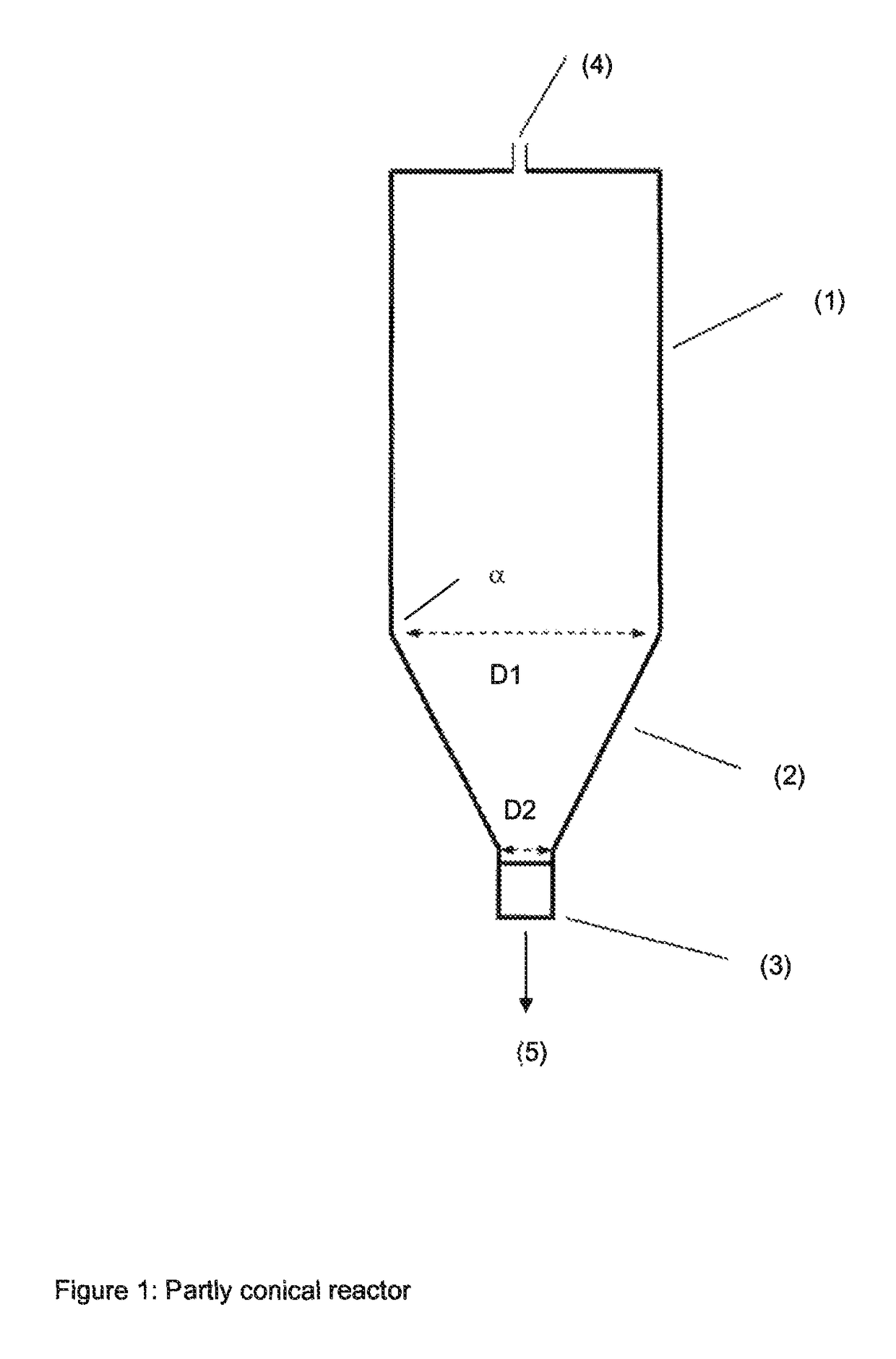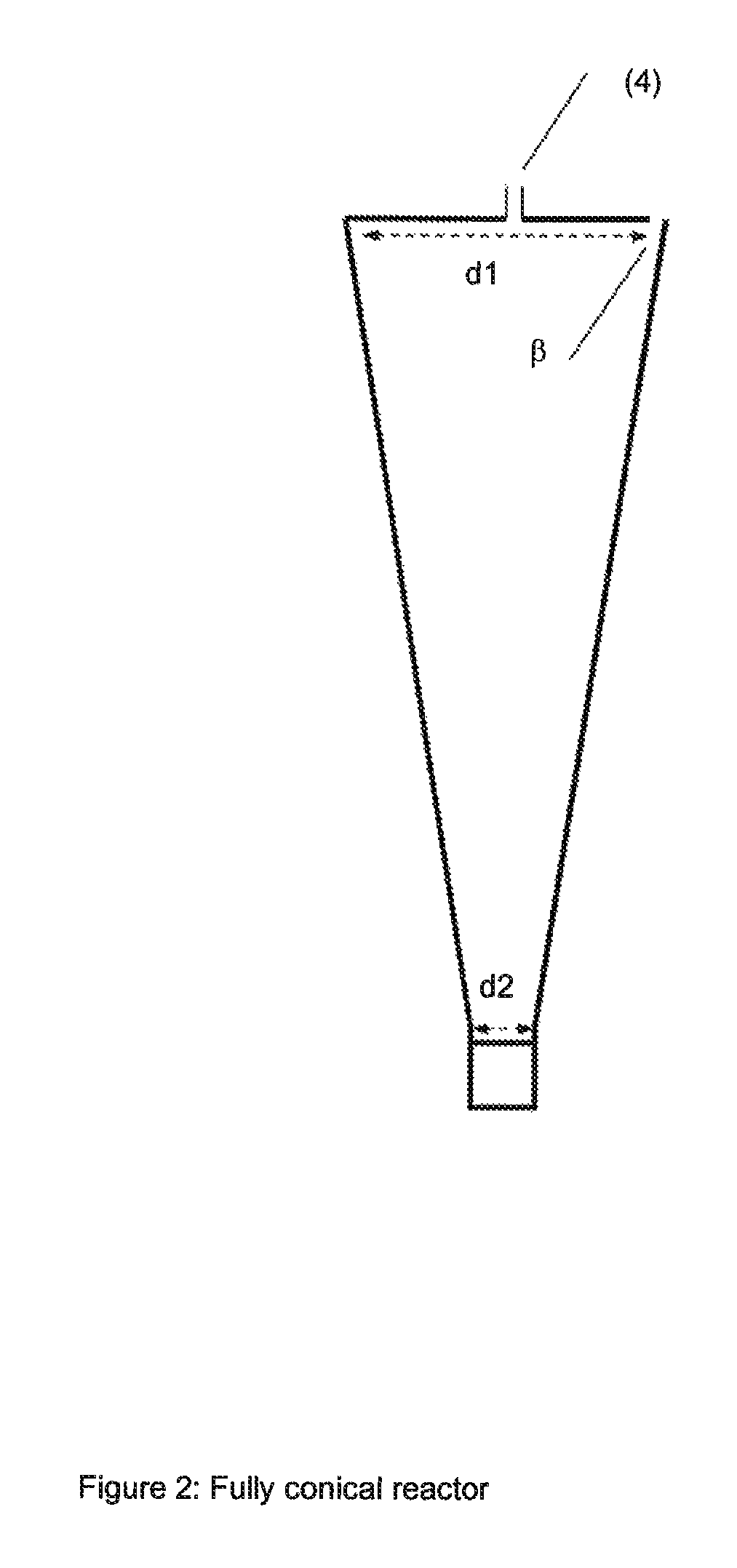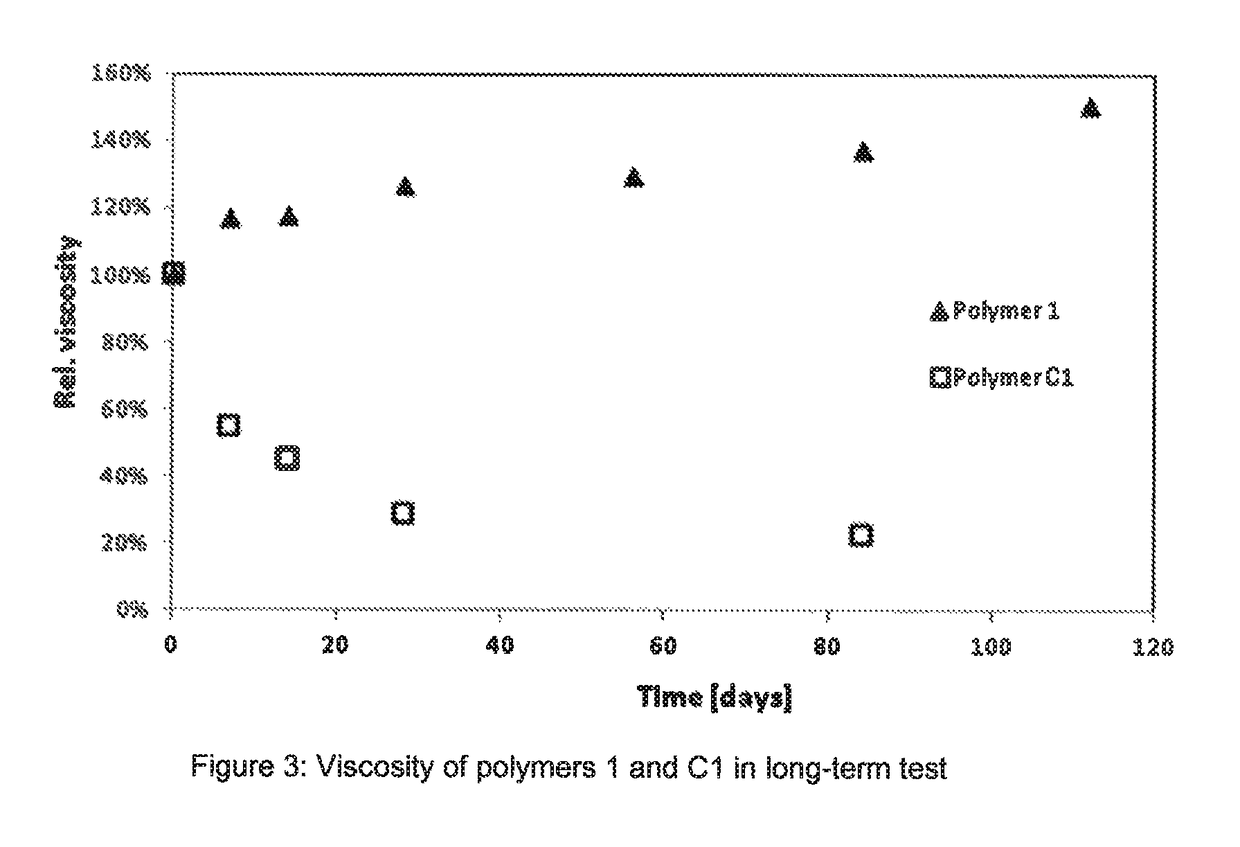Method for producing water-soluble homopolymers or copolymers which comprise (meth)acrylamide
a technology of water-soluble homopolymers and copolymers, which is applied in the field of producing water-soluble homopolymers or copolymers which comprise (meth)acrylamide, can solve the problems of high amount of polymer solution required for polymer flooding, inconvenient to completely exclude oxygen, and chemical degradation of polymers
- Summary
- Abstract
- Description
- Claims
- Application Information
AI Technical Summary
Benefits of technology
Problems solved by technology
Method used
Image
Examples
example 1
Preparation of a Copolymer of 67% by Weight of Acrylamide and 33% by Weight of Sodium Acrylate
Free-radical oxygen scavenger: sodium 2-mercaptobenzothlazole (0.35% by weight based on monomers)
Initiation at: 0° C.
pH 6.5
Monomer concentration: 30% by weight
[0187]The following were added to a plastic bucket with magnetic stirrer, pH meter and thermometer 112.8 g of a 35% aqueous solution of sodium acrylate, and then successively 108.3 g of distilled water, 164.0 g of acrylamide (49.1% aqueous solution), 1.2 g of diethylenetriaminepentaacetic acid, pentasodium salt (as 5% aqueous solution), 0.42 g of sodium 2-mercaptobenzothiazole and 4 ml of a 4% aqueous solution of 4,4′-azobis(4-cyanovaleric acid) (10 h t1 / 2 in water: 69° C.). After the solution had been adjusted to pH 6.5 with a 20% or 2% sulfuric acid solution, a monomer concentration of 30% by weight of monomers, based on the sum total of all the components of the monomer solution, was set by means of further addition of water, and t...
example 2
Preparation of a Copolymer of 67% by Weight of Acrylamide and 33% by Weight of Sodium Acrylate
Free-radical oxygen scavenger: sodium 2-mercaptobenzothiazole (0.5% by weight based on monomers)
Initiation at: 0° C.
pH 6.5
Monomer concentration: 30% by weight
[0191]The procedure was as in example 1, except that the amount of the free-radical scavenger was altered. The results are summarized in table 1.
example 3
Preparation of a Copolymer of 67% by Weight of Acrylamide and 33% by Weight of Sodium Acrylate
Free-radical oxygen scavenger: sodium 2-mercaptobenzothlazole (1.08% by weight based on monomers)
Initiation at: 0° C.
pH 6.5
Monomer concentration: 30% by weight
[0192]The procedure was as in example 1, except that the amount of the free-radical scavenger was altered. The results are summarized in table 1.
PUM
| Property | Measurement | Unit |
|---|---|---|
| Temperature | aaaaa | aaaaa |
| Temperature | aaaaa | aaaaa |
| Temperature | aaaaa | aaaaa |
Abstract
Description
Claims
Application Information
 Login to View More
Login to View More - R&D
- Intellectual Property
- Life Sciences
- Materials
- Tech Scout
- Unparalleled Data Quality
- Higher Quality Content
- 60% Fewer Hallucinations
Browse by: Latest US Patents, China's latest patents, Technical Efficacy Thesaurus, Application Domain, Technology Topic, Popular Technical Reports.
© 2025 PatSnap. All rights reserved.Legal|Privacy policy|Modern Slavery Act Transparency Statement|Sitemap|About US| Contact US: help@patsnap.com



